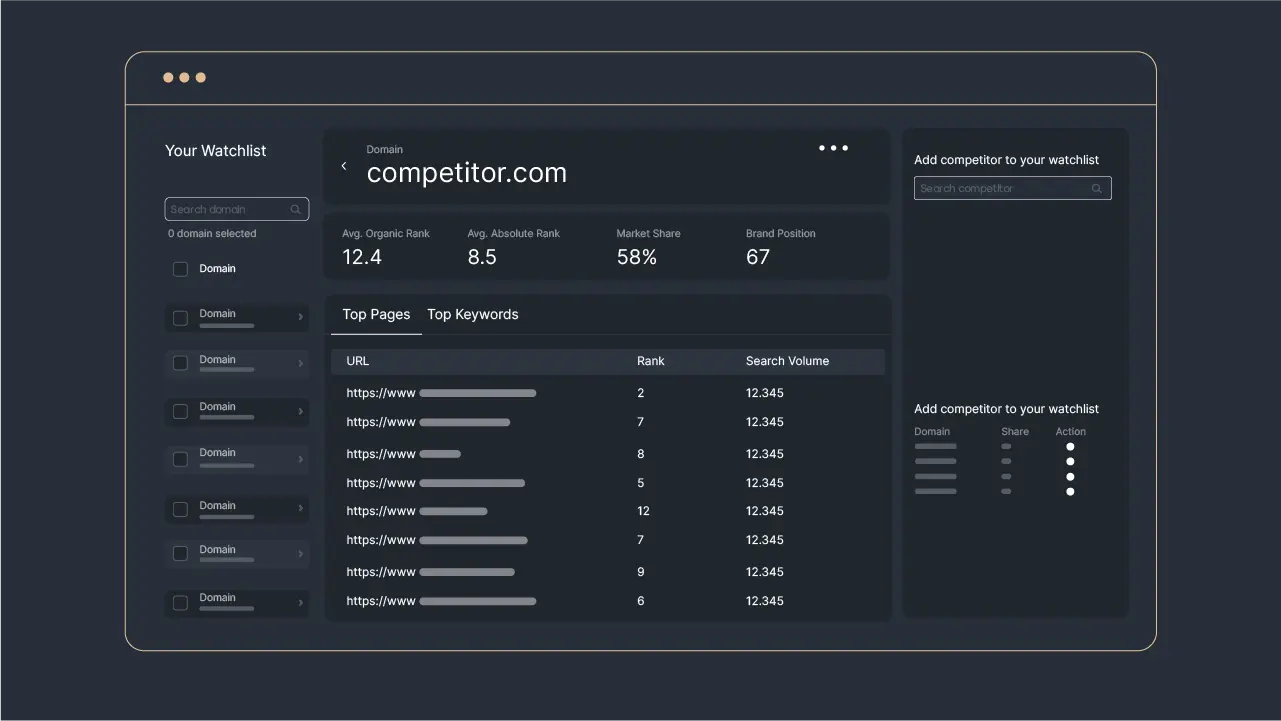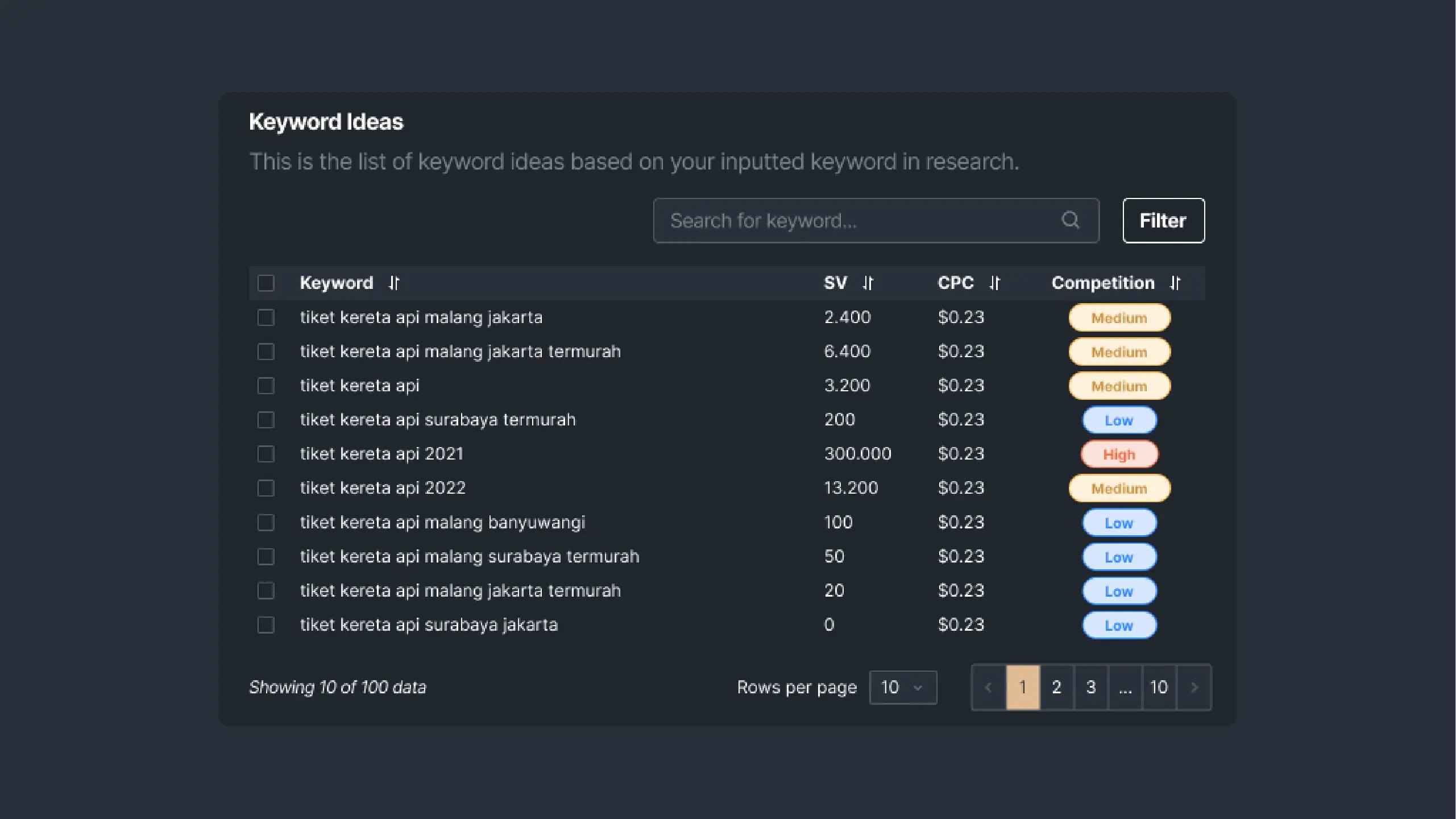Keywords always be a warming topic in SEO. This is the foundation of a successful SEO strategy. By targeting the right keywords, a business can level up its online presence in the search engine. Thus, the upmost important thing to do is to find the seed keywords.
To gain the fullest understanding of seed keywords in SEO, here is everything you need to know.
Seed Keyword Definition
The seed keyword, also known as the primary keyword, is the foundational term that encapsulates the main topic or theme of your content. It serves as the starting point for your keyword research and content optimization efforts.
The seed keyword can be seen as a compass that shows you where you have to go. This kind of keyword guides your SEO strategy and helps search engines understand what your content is so that the search engine can show it to users' search queries.
Seed Keyword Examples
To give you a more understanding of seed keywords, here are some seed keyword examples and explanation for it.
1. Seed Keyword: "Digital Marketing"
Explanation: "Digital Marketing" is a broad seed keyword that can explain various online marketing strategies and techniques used to promote products or services on digital platforms.
This term indicates that the website or content focuses on the broader topic of digital marketing, which may include topics like SEO, social media marketing, content marketing, email marketing, and more.
2. Seed Keyword: "Fitness Equipment"
Explanation: "Fitness Equipment" is a seed keyword indicating that the website or content deals with products related to fitness and exercise. This seed keyword may explain various types of fitness equipment, including treadmills, dumbbells, resistance bands, yoga mats, and more as the variant keywords.
3. Seed Keyword: "Travel Destinations"
Explanation: "Travel Destinations" is a seed keyword suggesting that the website or content focuses on providing information related to various travel locations around the world. This seed keyword may cover different types of destinations, such as beach destinations, mountain getaways, historical sites, or city breaks.
The Role of Seed Keyword in SEO
At its heart, the seed keyword acts as the cornerstone of your SEO efforts, guiding the direction of your content creation, on-page optimization, and overall website structure. Not only that, having a clear-defined seed keyword can help you with several things such as connecting content to user intent, and can have a good impact on search rankings.
Without seed keywords, your content will lack focus, direction, and may struggle to rank effectively in search engine results. As a result, search engines may have difficulty understanding the purpose of your content, leading to reduced organic traffic.
Step-by-Step Guide to Finding the Seed Keyword
You might confuse because at the moment you researching a keyword, you need to input your seed keyword. So, where do you get that the first time?
To answer your curiosity, here is how to find seed keywords for your SEO content or page.
A. Brainstorming Relevant Keywords
First of all, before you begin your keyword research, it's essential to brainstorm relevant keywords that are closely related to your business, products, services, or the main theme of your content.
This initial brainstorming session sets the stage for discovering the perfect seed keyword. You can start by gaining a deep understanding of your business, website, or the primary theme of your content. Ask yourself key questions such as:
What products or services do you offer?
What is the primary goal of your website?
What topics do you want to be known for?
Who is your target audience, and what are their interests?
By clarifying your business objectives and content theme, you can generate more targeted keywords that align with your overall strategy.
Besides brainstorming business content objectives, you can find seed keywords by utilizing
customer feedback. This can be a valuable resource for identifying keywords that resonate with your audience. Check customer reviews, comments, and questions to discover the language they use when discussing your products or services.
B. Understanding User Intent
The next step is to understand the user intent before choosing the right seed keyword. It involves defining the purpose behind a user's search query and delivering content that precisely addresses their needs and expectations. Here are the types of user intent you can explore:
Navigational Intent: Users with navigational intent are searching for a specific website or brand. For instance, a user searching for "Facebook login page" has navigational intent.
Informational Intent: Users with informational intent seek answers to questions or solutions to problems. For example, someone searching for "how to make French toast" has informational intent.
Transactional Intent: Users with transactional intent have the intention to complete a specific action, such as making a purchase, signing up for a service, or downloading an e-book. A search query like "buy running shoes online" indicates transactional intent.
C. Conducting Competitor Analysis
The last step is to do a competitive analysis. Analyzing your competitors' keywords can provide valuable insights and help you find the perfect keyword to target.
To do that, you can follow these steps:
Identifying Key Competitors: Look for businesses or websites that offer similar products, services, or content to your own.
Analyzing Competitor Keywords: Once you've identified your competitors, analyze the keywords they are targeting in their content and SEO efforts. Use Sequence Stats Domain Watchlist to discover which keywords are driving traffic to their websites and which ones they rank for in search results.
Assess Keyword Gaps: Identify keywords that your competitors are not targeting, but are relevant to your business or content. These represent opportunities for you to rank for terms they may be missing.
Differentiating Your Seed Keyword: Based on your competitor analysis, refine your seed keyword to differentiate your content from the competition.

Picture 1: Domain Watchlist feature to get competitors’ data about top keywords and pages.
D. Get The Keyword Ideas
After you collect the seed keywords, you may want to find related ideas to those keywords. You can use Sequence Stats to generate relevant keyword ideas to widen your content reach. All you need to do is input your keyword and let the system get the long list of keywords that you can target and track in the same tool.

Picture 2: Keyword Ideas feature in Sequence Stats as the keyword research tool.
Conclusion
As a wrap-up, the seed keyword is the primary keyword that will define your content. Finding the seed keywords can be tricky, yet rewarding. By following the step-by-step above, we wish you find ease.
With the help of the right seed keyword tool, you can succeed in the process. If you are willing to get keyword ideas with complete data, try Sequence Stats. A free trial is available.